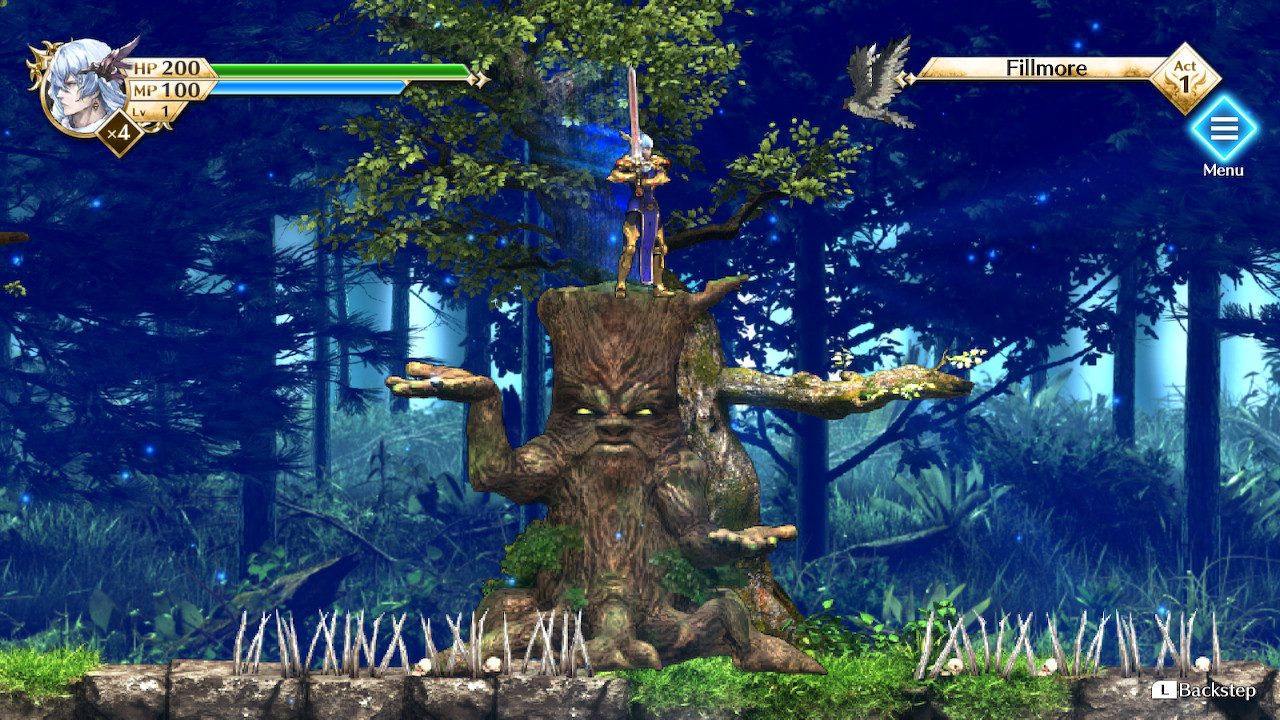If God had a name, please input it here
Actraiser was something of a formative game for me back when I started retro gaming. I don’t know why, it just stands out in my memory. It’s an interesting game; the very definition of being more than the sum of its parts. It takes two disparate genres, then smashes them together. City building and side-scrolling action.
Neither parts were very good, honestly. They weren’t bad, but they sure as shooting wouldn’t stand on their own. The side-scrolling was the bare necessities at best, and the city building didn’t really give you that much to do. Yet somehow, when combined with an awesome soundtrack, it stands out in the SNES library.
I certainly didn’t expect to see a remake of it, though. It kind of hit from nowhere. It was re-released on the Wii Virtual Console and then forgotten. Yet here we are with Actraiser Renaissance. Someone really wanted this game to happen, and so did I.

Actraiser Renaissance (Nintendo Switch [Reviewed], PC, PS4, iOS, Android)
Developer: Square Enix, Sonic Powered
Publisher: Square Enix
Released: September 23, 2021
MSRP: $29.99
If you only look at screenshots, Acraiser Renaissance seems like a remaster. The structure of the SNES game remains intact, all the levels are here, in the same order, and the gameplay is the same. Your guy goes “Huh! Huh! Huh!” every time you swing your sword, but now your feet go “Clack! Clack! Clack!” on the floor. What I’m saying is that everything comforting about the original is here, but a lot of new stuff has been slathered on. It’s a whole-fat remake.
Actually, a lot has been caked on top. While “build city, fight monster” is still the main foundation of the game, the developers have added some depth to make the game mechanics less weak. Even the side-scroller areas, while still not all that dazzling, are helped by some improvements. Notably, you have more than one sword swing, some extra moves, and you can power up your God temporarily by collecting crystals dropped by enemies.
The story remains the same. You play as a dormant God, reawakened to save the world from Tanzra and restore the glory of a monotheistic system of beliefs. Unfortunately, the lands have been all but destroyed, so before you can expose your glory to the people below, you first need to make more people. You only intervene when really needed, like when a rock needs to be moved or a demon has to be destroyed. Or, like, anytime there’s a problem.

The biggest change is the addition of another layer of gameplay: tower defense. While the city building is largely the same — you point your settlers in the direction you want them to build and they handle everything else themselves — you’re often stopped to hold off hordes of monsters.
Handling them requires careful consideration of three things: placement of defenses, movement of your heroes, and use of your miracles.
Each area gives you a new hero, and once you complete that location, you can summon that hero into other areas to help you. Each one either uses magical or practical attacks and fights at range or in melee. Certain monsters are shielded against magic and others fly, so balancing your crew is important to a good defense.
Also important are your actual defensive structures, however, this is where Actraiser Renaissance fumbles the hardest. There are three to choose from that can be upgraded, but the placement of them is spotty. I honestly have no idea how the game decides where you can and can’t put a gatehouse or tower. Nor do I understand why I can’t place a monster-blocking palisade on a perfectly empty stretch of road.
Plus, the building mechanics don’t give you direct control of the roads. With practice, you can figure out how to create funnel points, but sometimes the villagers just put them wherever they please, and figuring out how to get monsters to actually try to pass through your gatehouse can be difficult. Not impossible, mind you, just difficult.
Finally, you can use your miracles for more than just clearing out patches of undesirable terrain. Each monster has a strength and weakness against your five miracles, so smiting them from a great height can relieve stress for your forces below. However, there’s your SP to consider and the fact that each has a cooldown. You can’t just give everything a divine thrashing, but you can lighten the load.

As a whole, the tower defense is not completely ideal, but it is a meaningful layer added on top. The inclusion of heroes adds more depth to the story as each area has them going through their own character arcs and struggling with their beliefs. It’s honestly a lot of text, but the addition of these heroes makes each area feel more distinct.
So while the tower defense isn’t the best and is probably going to be very divisive among fans, it adds a lot of missing depth to Actraiser Renaissance. It feels like something that was missing the whole time, that adds meaning and pacing to the city building.
However, it should be noted that these sections get repeated frequently. The flow of the city building sections is generally “build, seal monster spawner, defend, repeat.” I never found that it became a slog, but it certainly was predictable. You also get interrupted by dialogue a lot. A lot. Again, it didn’t diminish my enjoyment of the game, but some players are going to be infuriated.

Speaking of which, the first gripe I heard about Actraiser Renaissance was about its graphics. The developer went for a 3D-to-2D approach, not unlike Donkey Kong Country or Code of Princess. It’s an unusual choice, to be sure, perhaps made to ensure the game runs on mobile platforms. This is another facet that didn’t bother me, but I do feel it’s the least ideal method of conveying the art. It’s an antiquated technique that I never found appealing to begin with. However, I normally wouldn’t find it noteworthy enough for a mention, but I’ve heard enough people balk at it, that I feel it’s necessary to bring it up.
The music, on the other hand, is incredible. Done by legendary composer Yuzu Koshiro, plenty of new tracks have been added, and they gel well with the originals. The touched-up score sounds great, but if you prefer the SNES line of buzzy instruments (I do), you can switch the whole thing over to sound like the classic. The new tracks are included in this, apparently created first in SNES style to make sure they fit seamlessly. And it works! And it’s great! An improvement on an already amazing soundtrack.
There’s also an extra settlement after the credits with an accompanying action stage. The story hints that it could possibly continue, which I’m down for. I know some people will be rooting for a remake of Actraiser 2. Personally, I’d prefer another game in the original formula.

To me, Actraiser Renaissance is a clear improvement over the original in every regard. It takes what made the original great as a foundation and builds upon it. It doesn’t pervert the classic title, instead, it just upgrades it, fixing some of its faults in the process. It’s a remake that’s up there with The Legend of Zelda: Link’s Awakening in terms of touching up an already great game.
Not everyone is going to think that way, clearly. Each individual has their own expectations for a remake, and Actraiser Renaissance may have put hands on facets that were once sacred. Some will find the changes intrusive. It would have been nice if there was a classic mode included that strips out the tower defense to make everyone happy, but that’s not in the cards. In my eyes, however, Acraiser Renaissance was one of the biggest surprises and the most enjoyable gaming experiences I’ve had this year.
[This review is based on a retail build of the game purchased by the author.]














Published: Sep 27, 2021 04:00 pm